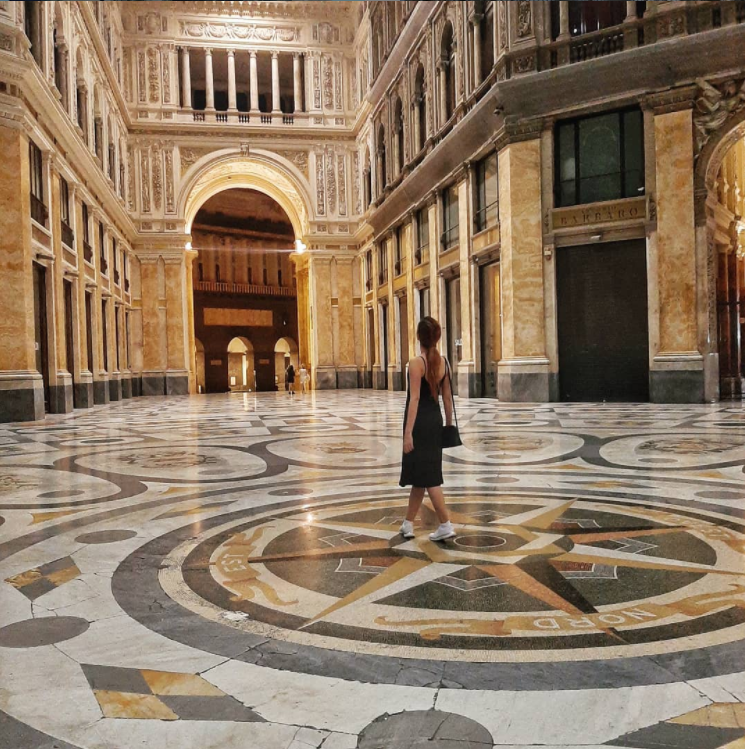Galleria Umberto I
One of the symbols of the city of Naples is Galleria Umberto I, which was begun in 1887 and finished in 1890. It was dedicated to King Umberto I of Italy, in memory of his aid to the population when the cholera epidemic broke out in 1884. The Galleria is an imposing work, about 147 meters long, 35 meters high, and about 15. It consists of four entrances, which are located in Santa Brigida, Via Toledo, Via San Carlo, and Vico Rotto San Carlo.
The main entrance to the gallery is the one on Via San Carlo. From there it is possible to admire the four marble statues representing four different parts of the world: Europe, Asia, Africa, and America, positioned on the left arch. On the right arch, on the other hand, we find the Four Seasons represented on the columns, specifically from left to right, traditional subjects that represent the unfolding of time to which human activities, work, and the genius of science are linked. On the pediment, we find Commerce and Industry half-lying on the sides of Wealth, which represent the myths of today’s bourgeois society.
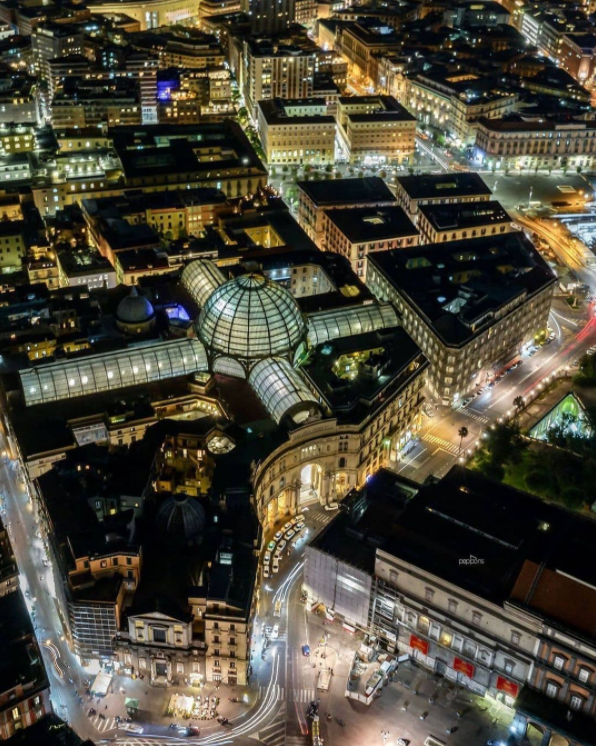
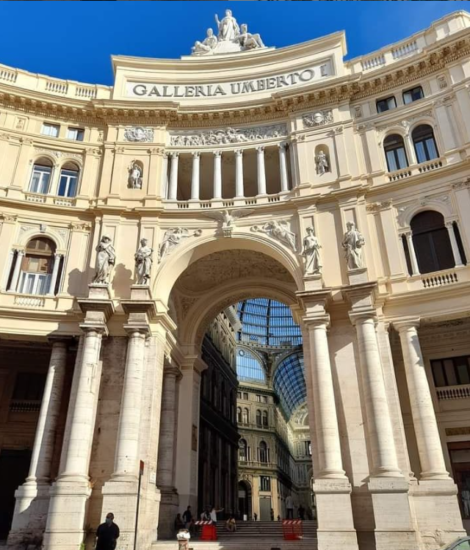
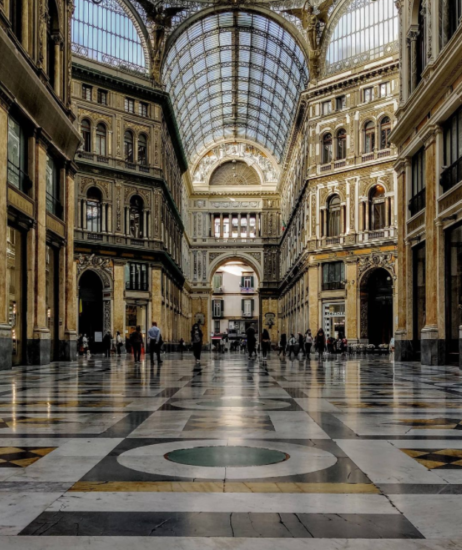
In the ceiling of the portico, a series of classical divinities can be seen, such as Diana, Cronus, Venus, Jupiter, Mercury, and Juno. The main entrance consists of an exedra facade, which at the bottom has an arched portico, supported by travertine columns and two blind arches. Followed by serliana windows separated by pairs of pilasters with a composite capital while on the second floor we find mullioned windows and pilasters similar to the previous ones.
The interior of the gallery consists of two orthogonally crossing streets, covered by an iron and glass structure. On the drum of the dome of the Galleria Umberto I in Naples you can see the Star of David, a symbol of Neapolitan Freemasonry, in particular of the Masonic lodge Grande Oriente d’Italia, which was based in the Gallery. When the gallery was built inside there were not only commercial premises: today, in fact, in addition to being an important monumental place, it is also a commercial meeting place, where the most important Campania boutiques are located.
In the beginning, however, this was not the case. The attraction of the Gallery was a small underground theater, inaugurated in 1890 and known to the Neapolitan population by the name of Salone Margherita. For about twenty years the theater was the main evening meeting place for nobles, intellectuals, and aristocrats of the time. The Neapolitan nobility placed their leisure activities in this narrow and fascinating space, which saw the participation of artists such as Salvatore Di Giacomo, Ferdinando Russo, Matilde Serao, Gabriele d’Annunzio, Eduardo Scarfoglio, and Francesco Crispi.
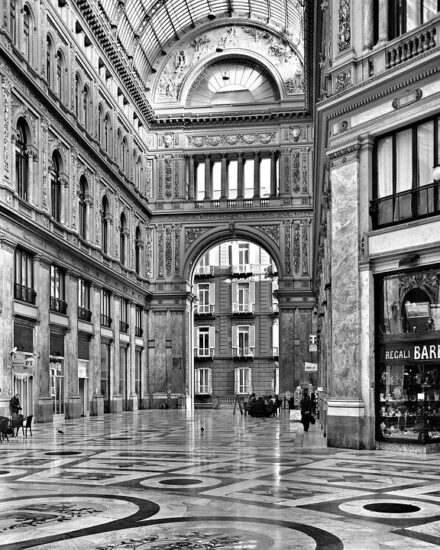
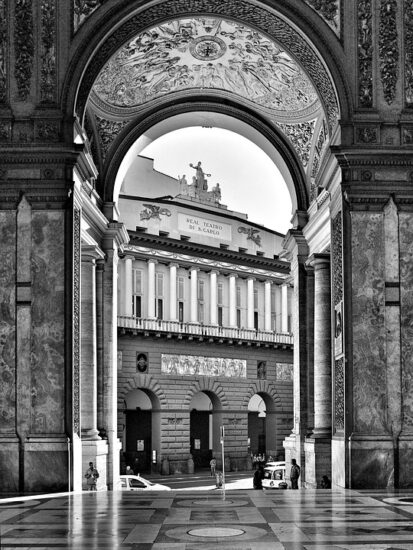
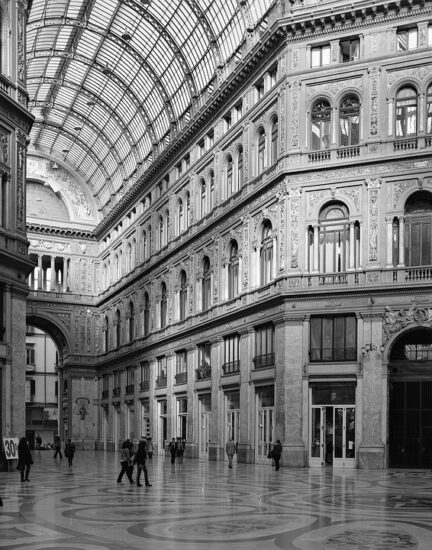
The purpose for which the imposing building was erected, however, was to provide the inhabitants of the center with a place to shelter on days from the most adverse temperatures. The building, however, was built with great aesthetic claims: its function was not merely practical but also and above all decorative.
In this regard, we must think that it occupies a place among the most important monuments of Naples, such as the Teatro San Carlo and the Maschio Angioino. In any case, it was not long after its opening, that the Galleria Umberto I in Naples began to be populated with commercial activities, among which journalistic editorial offices, ateliers, and various fashion or restaurant shops appeared.
Even today, the most important boutiques and the most famous brands of the city of Campania are concentrated here, a destination every day for tourists but also for shopping addicts, who come here to do their shopping. Here again, there are some bars where you can relax sipping a good coffee or enjoying a good Neapolitan sfogliatella, riccia, or shortcrust pastry. The Galleria Umberto I is one of the most important architectural monuments of the city of Naples.

